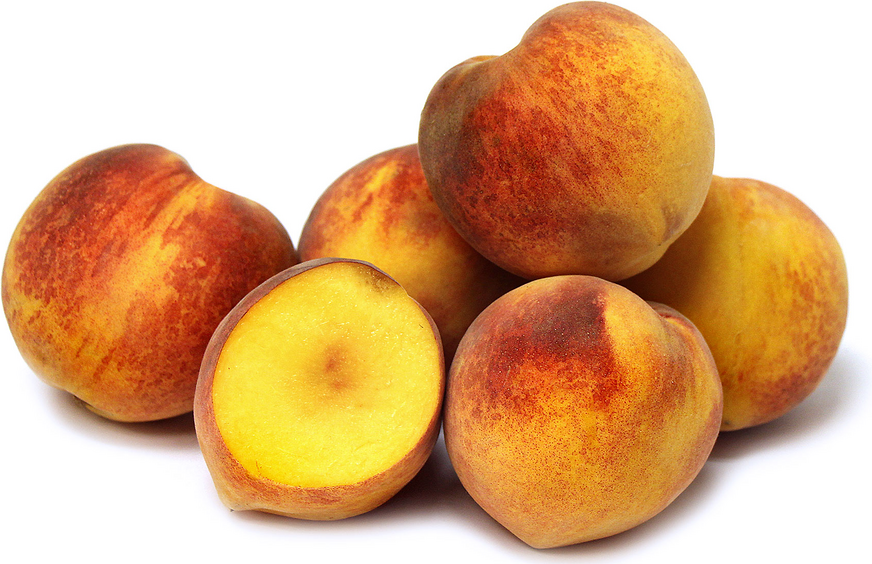


Last Chance Peaches
Estimated Inventory, 22 lbs : 0
Description/Taste
Last Chance peaches are medium to large fruits, roughly 8 to 10 centimeters in diameter, with rounded bottoms. Their yellow skins develop a deep red blush on the side with the most sun exposure and are covered in an abundance of fine, downy fuzz. The deep orange-yellow flesh is firm and moderately juicy with a distinct aroma. The flesh around the freestone, central pit is a deep red. Last Chance peaches are sweet with a balanced acidity.
Seasons/Availability
Last Chance peaches are available in the late summer and early fall months.
Current Facts
Last Chance peaches are a late season, freestone variety of Prunus persica. At one time, they were revered as one of the tastiest freestone peaches on the market according to restauranteur Alice Waters. During the mid-1990s Last Chance peaches made up 14% of the commercial peach trees sold in the state of California. Today they are grown on a smaller scale and are produced by a limited number of boutique orchards in the United States.
Nutritional Value
Last Chance peaches are a good source of vitamins A and C and fiber. They are a source of iron, sodium, potassium, fluoride, and beta-carotene. Peaches are rich in antioxidants from polyphenols like lutein, zeaxanthin and ß-cryptoxanthin.
Applications
Last Chance peaches can be eaten raw or cooked. The late season peaches freeze well and are perfect for canning; they retain their coloring and defrost nicely. Peel and slice them for pies, tarts, and other baked goods. The late availability of these peaches lends well to various fall recipes and can be added to savory dishes paired with pork or other meats. Use them for making jams, jellies and preserves. Add slices to smoothies or puree for ice cream, sorbet or other frozen desserts. Store Last Chance peaches in the refrigerator for up to a week.
Ethnic/Cultural Info
There is some debate about how Last Chance peaches earned their name. One story has Sprague calling the new peach his “Last chance” to make a buck during a time when peaches weren’t growing so well in California’s Antelope Valley. Another story says that the tree grew from a pit tossed into Sprague’s backyard and after multiple attempts to get rid of the tree, Sprague said, “Alright, I’ll give you one last chance!” Though most assume the name comes from the stone fruit’s late season harvest, the variety being the ‘last chance’ for a peach before the end of the season.
Geography/History
Last Chance peaches were discovered in 1983 by Jim Sprague in California’s Antelope Valley. According to the official patent, the new variety was found growing on the branch of another peach tree in a cultivated orchard. Antelope Valley is 80 miles north of Los Angeles and is situated in the high desert, not a typical environment for peaches. During the mid-1980s thousands of trees were planted in the area by farmers and friends of Sprague. Last Chance peaches saw a surge in popularity in the late 1980s and early 1990s, but some farms struggled with low production. Today, Antelope Valley is still home to orchards that grow Last Chance peaches. The late season variety is also grown in California’s Napa region and Central Valley as well as in North and South Carolina. Last Chance peaches are most likely spotted at farmer’s markets and home orchards.
Recipe Ideas
Recipes that include Last Chance Peaches. One




